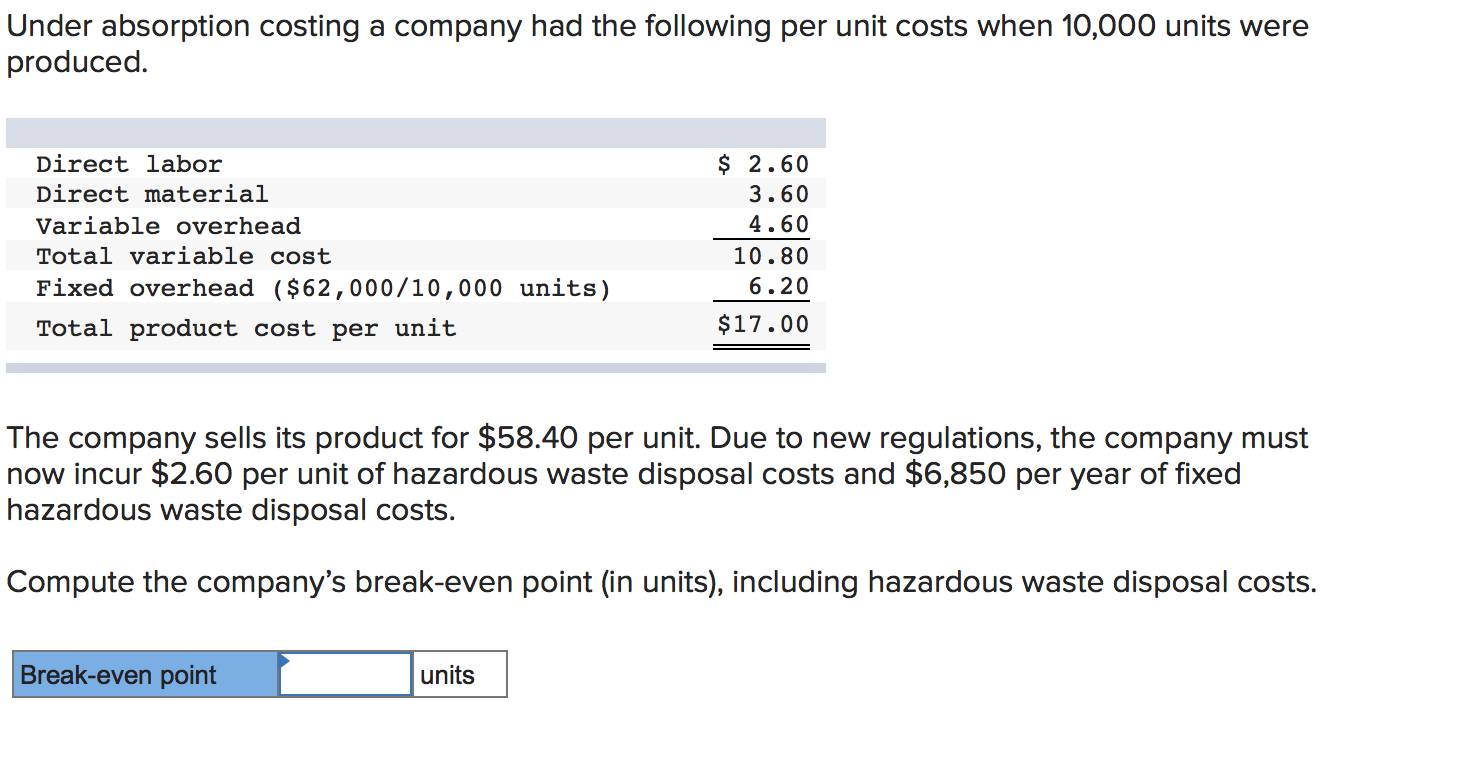
list of tangible and intangible assetsing has some limitations, and it can be challenging to assess the impact of changes in production levels on profitability since fixed overhead costs remain constant. Variable costing is more useful than absorption costing if a company wishes to compare different product lines’ potential profitability. It is easier to discern the differences in profits from producing one item over another by looking solely at the variable costs directly related to production. Absorption costing can cause a company’s profit level to appear better than it actually is during a given accounting period. This is because all fixed costs are not deducted from revenues unless all of the company’s manufactured products are sold.
Which of these is most important for your financial advisor to have?
The products that consume the same labor/machine hour will have the same cost of overhead. Variable costing, on the other hand, includes all of the variable direct costs in the cost of goods sold (COGS) but excludes direct, fixed overhead costs. Absorption costing is required by generally accepted accounting principles (GAAP) for external reporting. The absorption cost per unit is $7 ($5 labor and materials + $2 fixed overhead costs). As 8,000 widgets were sold, the total cost of goods sold is $56,000 ($7 total cost per unit × 8,000 widgets sold). The ending inventory will include $14,000 worth of widgets ($7 total cost per unit × 2,000 widgets still in ending inventory).
Critiques of Absorption Costing

The percentage is obtained by dividing the overhead cost by the amount of direct labor. Therefore, it becomes necessary to charge overheads to the cost of products, jobs, and processes according to certain well-established norms and scientific reasoning. Direct labor costs are the wages and benefits paid to employees who are directly involved in the production of a product. These are individuals whose efforts can be directly attributed to a specific product’s manufacturing. In this article, we’ll explore the fundamental concept of absorption costing for accounting in manufacturing. One of the main advantages of choosing to use absorption costing is that it is GAAP compliant and required for reporting to the Internal Revenue Service (IRS).
What Are the Purposes of Budgeting?
Additionally, when there is unsold inventory, absorption costing can result in higher reported profits because fixed overhead costs are deferred into inventory until the products are sold. The tax benefits of absorption costing can be particularly pronounced in periods of inventory accumulation. As companies build up their inventory, a portion of the fixed costs is capitalized on the balance sheet rather than expensed on the income statement.
Absorption costing can be adapted to allocate these costs to service units or projects, thereby providing a fuller picture of the cost of delivering a service. This allocation is often based on time spent or resources used, which can help in setting prices that ensure all costs are covered. For instance, a consulting firm might allocate the cost of its analysts and office space to the hours billed to a client project. While this method can lead to a more accurate reflection of service costs, it also requires careful consideration of how to define and measure service units or projects for cost allocation purposes. Variable costs, such as raw materials and direct labor, fluctuate with the level of production.
- Absorption costing is the accounting method that allocates manufacturing costs based on a predetermined rate that is called the absorption rate.
- For instance, a consulting firm might allocate the cost of its analysts and office space to the hours billed to a client project.
- Expenses incurred to ensure the quality of the products being manufactured, such as inspections and testing, are included in the absorption cost.
- Together with the team Vincent sets the strategy and manages the content planning, go-to-market, customer experience and corporate development aspects of the company.
- This can lead to decisions that prioritize production over market demand, resulting in excess inventory and potential write-downs in the future.
In corporate lingo, “absorbed costs” often refer to a fixed amount of expenses a company has designated for manufacturing costs for a single brand, line, or product. Absorbed cost allocations for one product produced may be greater or lesser than another. The absorbed cost is a part of generally accepted accounting principles (GAAP), and is required when it comes to reporting your company’s financial statements to outside parties, including income tax reporting. Absorption costing is also often used for internal decision-making purposes, such as determining the selling price of a product or deciding whether to continue producing a particular product. In these cases, the company may use absorption costing to understand the full cost of producing the product and to determine whether the product is generating sufficient profits to justify its continued production. Under generally accepted accounting principles (GAAP), U.S. companies may use absorption costing for external reporting, however variable costing is disallowed.
Together with the team Vincent sets the strategy and manages the content planning, go-to-market, customer experience and corporate development aspects of the company. This enables businesses to make informed decisions and maintain accurate financial records in a complex manufacturing environment. Therefore, it is necessary to analyse and evaluate the pros and cons of the process and then decide whether it is suitable for the business.
Absorption costing is linking all production costs to the cost unit to calculate a full cost per unit of inventories. This costing method treats all production costs as costs of the product regardless of fixed cost or variance cost. It is sometimes called the full costing method because it includes all costs to get a cost unit. Those costs include direct costs, variable overhead costs, and fixed overhead costs.

